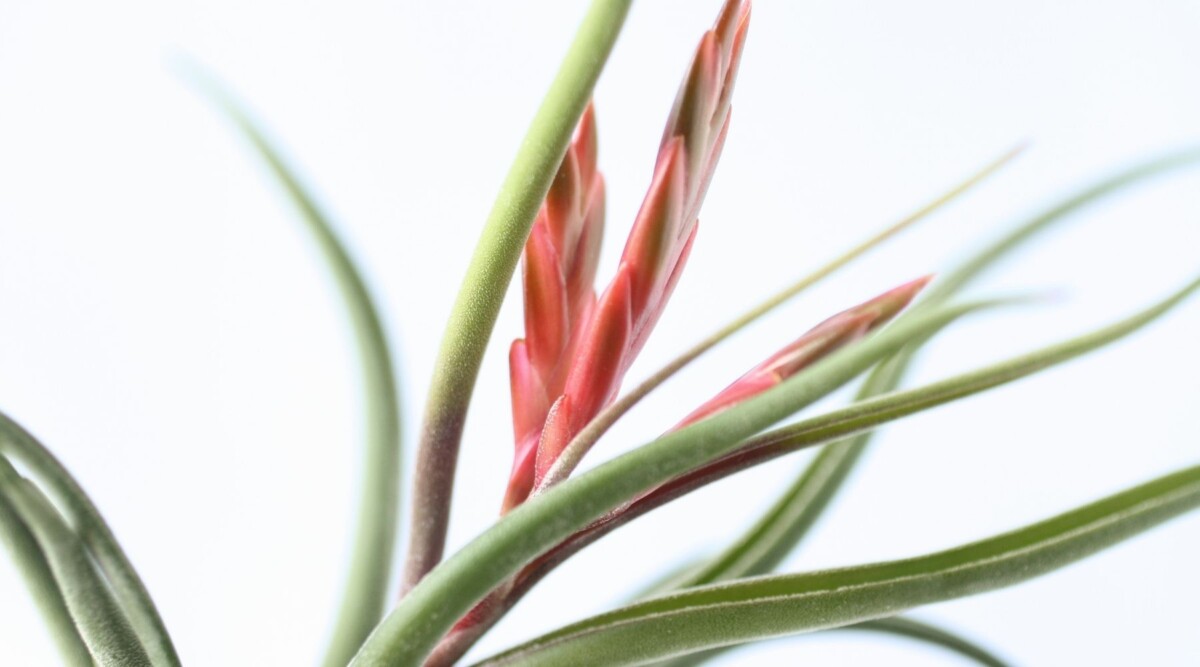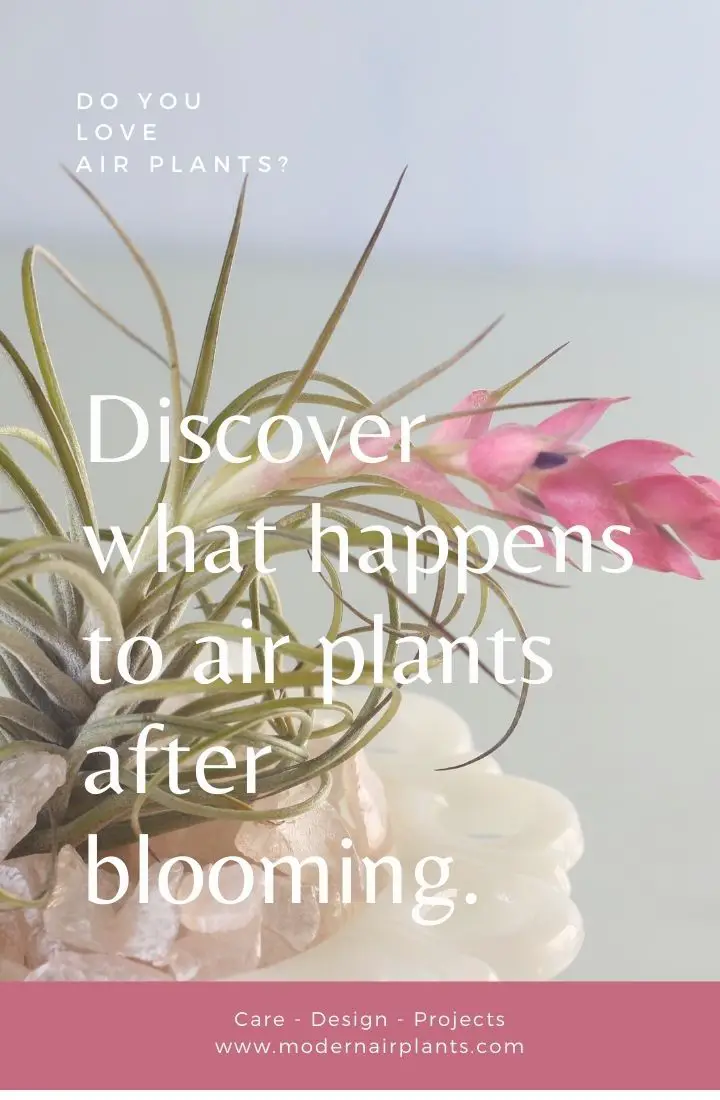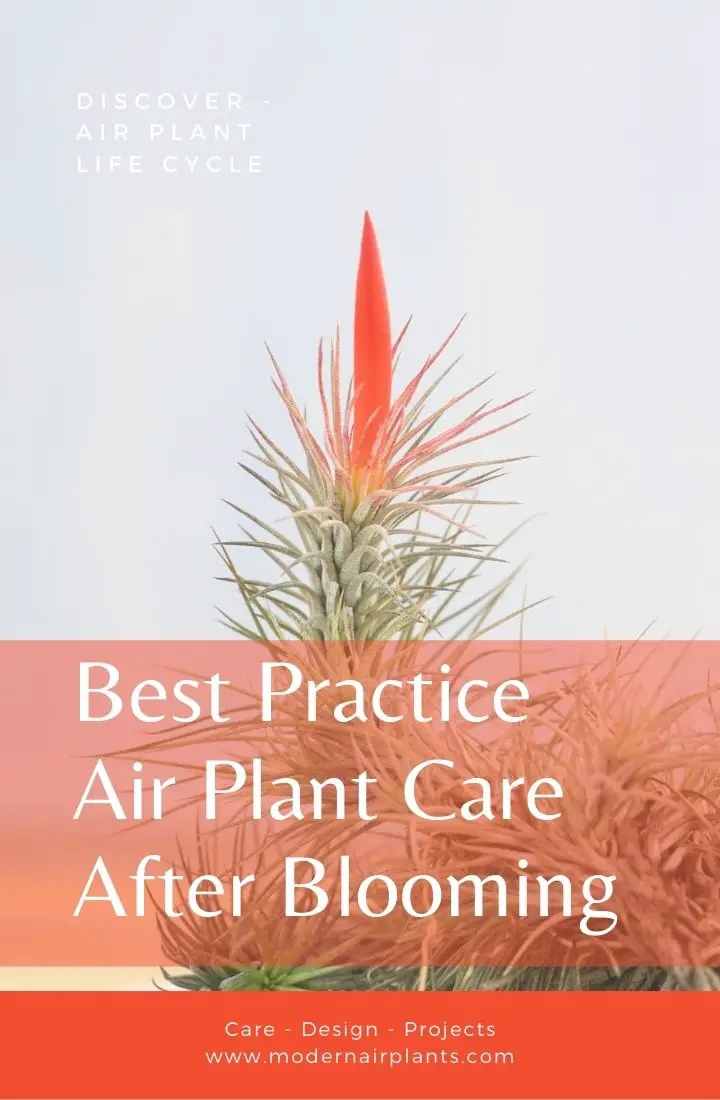
Do Air Plants Die After Blooming?
Air plants, which are also called tillandsias, are easy to grow, and they would add a lovely touch of green to your table or your garden without much work. And if you fertilize them regularly, they will produce beautiful and colorful flowers that would brighten up your space. But what else do you need to learn about flowering, and do air plants die after blooming?
This post may contain affiliate links, and I love all the products I promote.
Air plants die after blooming, but not very soon. After the blooming period, new air plant pups will form, and the mother plant will send most of its nutrients and energy to them. The mother plant will eventually dry out and die, but you will have more new air plants in return.
This article will discuss the life cycle of air plants, including what happens to them during and after their flowering phase. It will also explain in more detail why they eventually die after blooming just once. It will also talk about what you need to do while your air plants are forming pups.

The Life Cycle of Air Plants
Air plants bloom only once during their lifetime. Many think it is quite a sad fact, but that is a part of their life cycle. When they flower, that means they are at the peak of their life cycle and that they are already at the start of their “old age.”
However, flowering also signals the beginning of the reproductive process. In other words, it signals that propagation time is looming. After flowering, your air plants will reproduce, forming pups that you can eventually separate to become new air plants. There are also species of air plants that start forming pups right before or during their flowering phase.
Air Plant Blooms: Some Basic Information
Not all air plants are the same, and this can also be said about their flowers. For some species, blooms can last for several months, while flowers are more short-lived for others, lasting only a few months. Some even have flowers for only a couple of days.
Air plants produce different colored blooms, depending on the species. These beautiful colors range from delicate pinks and light lavender hues to bright yellows, oranges, purples, and reds. Different tillandsia species also give different bloom styles.
For example, there are species that shoot flowers straight from their center. There are also those that grow small buds from the center, which buds become larger and eventually open up to reveal flowers. Some have one flower, while some species also display multiple flowers from one spike or inflorescence.
When Do Air Plants Bloom?
Some air plants take longer to bloom than the other species. These air plants can take months or years before they start forming inflorescence. Usually, it is the larger species that take their time and also have longer blooming cycles. These larger species would even grow bloom spikes that would last several months.
Generally, healthy air plants would bloom in time. That means you would need to give your air plants proper care, including sufficient light and water, to ensure that they would flower eventually. You can fertilize your air plants to encourage or speed up blooming, too. But it would still be a waiting game until you see bloom spikes forming.
Caring for Blooming Air Plants
You will still need to continue giving your air plants the same amount of care while in bloom. Even if you know that they will eventually die, air plants in bloom will still require sufficient watering and feeding. In fact, a blooming air plant would need more than the usual amount of water since most of its nutrients and its energy would go towards the bloom.
However, instead of soaking or dunking the entire plant, you can mist, dunk, or hold them under slow-flowing water in such a way that their blooms do not get wet. Submerging the blooms in water for a prolonged period would cause them to wilt or rot. As such, it is best to be on the safe side and avoid soaking altogether.
After the Bloom Cycle
When your air plant’s bloom cycle has been completed, you would see one or a few new growths off the side of its base. These offsets are called pups or baby air plants, and they will eventually mature into individual air plants. You can encourage this next phase of growth after your plant’s bloom cycle by snipping off the bloom spike that emerged from the plant. By this time, there are no more flowers, and the spike may already be dry and brown or starting to be.
On average, one to three pups will form on the side of your air plant immediately after blooming. Again, it would depend on the tillandsia species. Some species will not create pups at the same time, though. They will wait until the previous pups have been removed before a new batch starts showing up.
Typically, you can expect two to eight pups from each air plant.
Separating Pups From the Mother Plant
The air plant pups start tiny, but they will gradually increase in size as they grow while still attached to their mother plant. You should not remove the pups too early or when they are still too small to survive on their own. They still need to receive nutrients straight from their mother plant.
Once they are one-third of one-half of the size of the mother plant, the pups can be safely separated. At this point, they are already big enough to draw nutrients on their own.
Why Do Air Plants Die After Flowering?
When air plants are in bloom, they direct all their nutrients and energy towards their bloom spike and their flowers. This is why you will notice that the plants dry more quickly than usual. Right after the bloom cycle, the reproduction process takes place, and your air plants will now divert their nutrients and energy into their new pups. So, it is best to snip off the bloom spikes so that your air plants can focus on sending their energies towards the new offsets they are forming.
With proper care, your air plants may still live a long time and continue producing a new batch of pups. Or you can leave the pups attached until they form a clump. However, these new pups will eventually take over the mother plant as it dries out and shrinks. If you remove the pups, you will still see the mother plant slowly die and wilt.
How to Care for Your Air Plants After the Blooming Cycle
The best way to care for your air plants after their bloom cycle is to continue giving them adequate light and by watering them as frequently as you did when they were still blooming. They are, after all, still supporting the nutrient and energy needs of their new babies. It would also be a good idea to fertilize them for the last few times since this can also help with pup formation and growth.

You can stop watering them once you have removed the final batch of pups and all their leaves have turned dry and brown.
Final Thoughts
An air plant blooms only once and eventually dies after, but not without producing new pups first. These pups will become new air plants in their place. The bloom cycle and the reproduction stage are energy-intensive phases, with the mother plant first sending all its nutrients and energy to its bloom spike and flowers, then later to its new pups. This process will eventually take a toll on the mother plant, causing it to dry out and wilt slowly.

